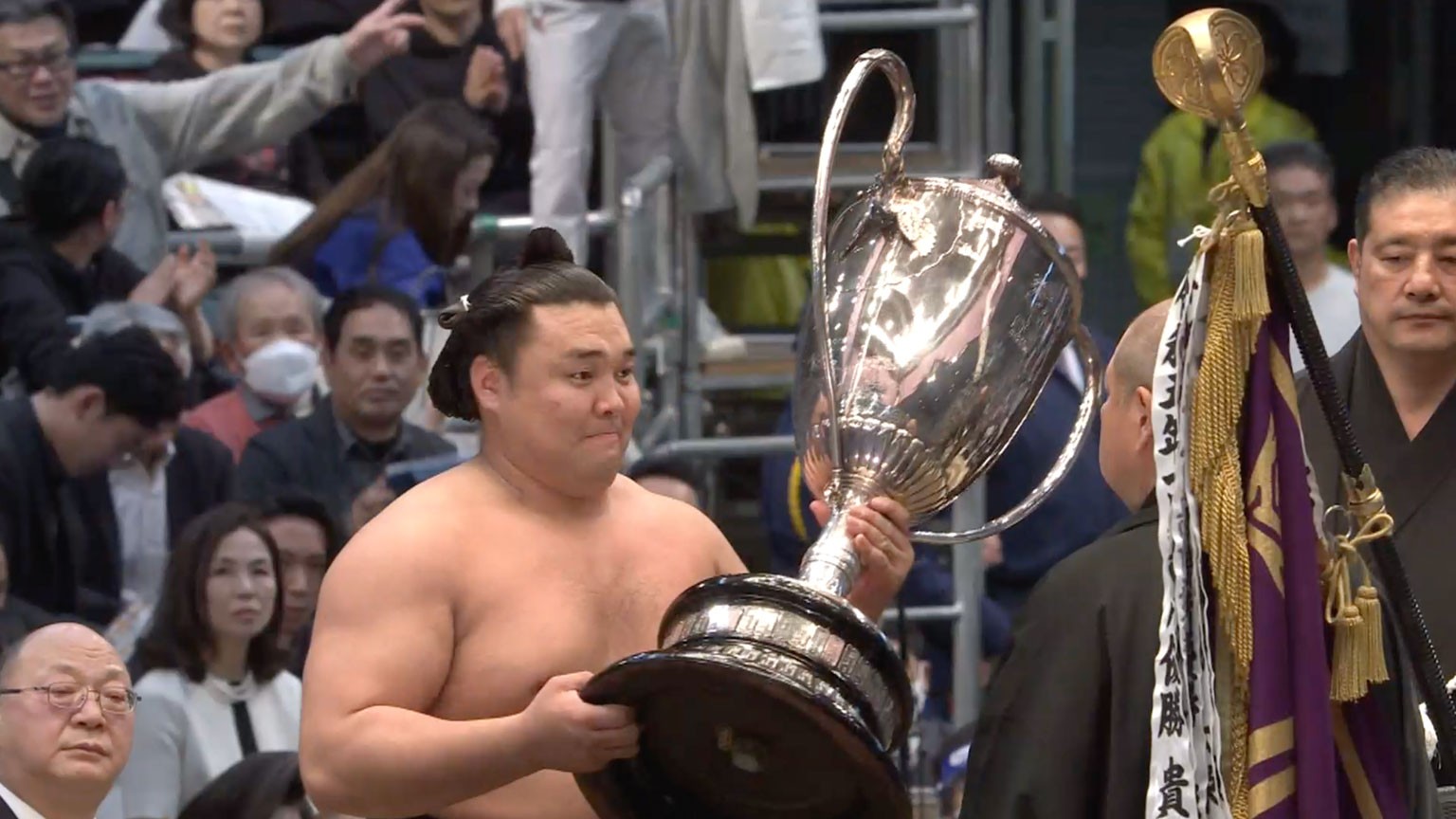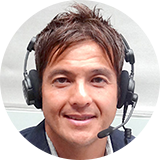Back to normal
With the fading of coronavirus fears, this year's Spring tournament was held with no spectator cap. The sumo association also removed all the measures that had been in place to restrict fans' actions in the stands. People were allowed to watch with no facial coverings, holler their favorite wrestlers' names, and enjoy food in their seats. This was a dramatic contrast to the 2020 Spring tournament, which had no spectators in the stands. Fans showed their appreciation by selling out the Osaka Prefectural Gymnasium for the entire 15 days.
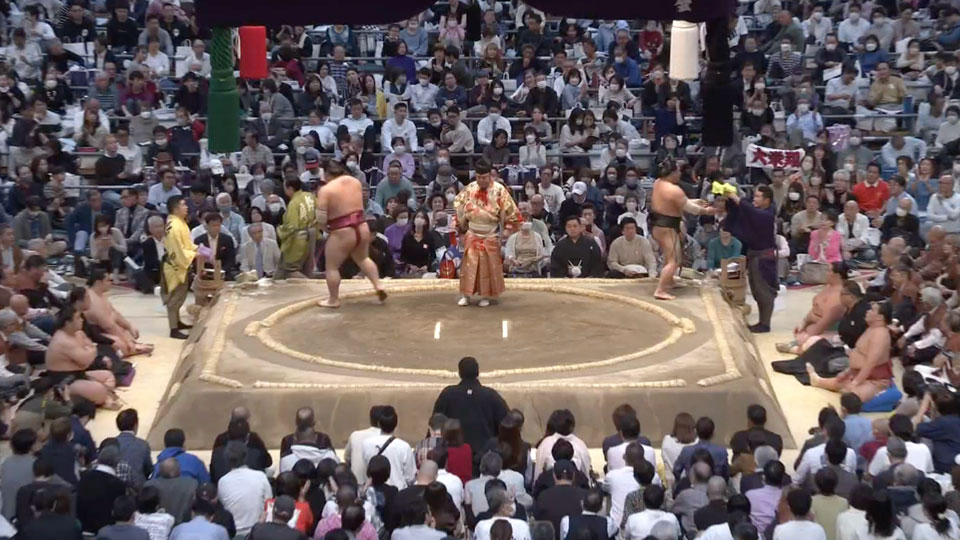
Remaining on the sidelines
Before the tournament, most people's attention was on whether the lone Yokozuna, Terunofuji, would compete or not. Terunofuji had sat out the past three tournaments with knee injuries. Skeptics doubted he would return to the ring this time, and they were right. Two days before the first match, Terunofuji decided to bow out yet again.
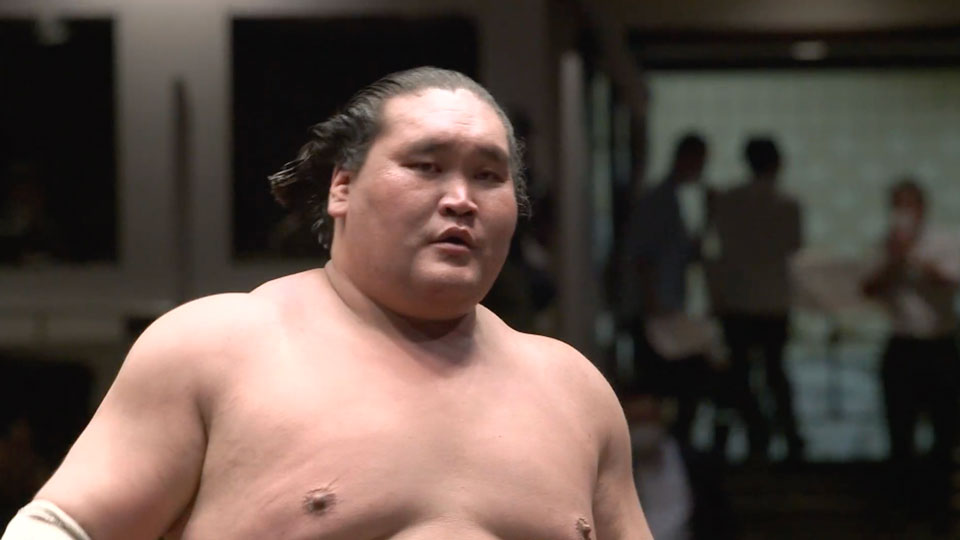
Falling short of expectations
Terunofuji's absence meant that the highest-ranked combatant in Osaka would be Ozeki Takakeisho. This was a golden opportunity for him to show he deserved promotion to Yokozuna. The 26-year-old had won his third championship in January and seemed confident. When I spoke to him at his stable before the tournament, he said he would embrace the challenge. Not everyone gets a shot at making the top rank, he said, and he believed he was mentally and physically ready. He told me he'd do everything he could to reward the confidence of those who have believed in him and supported him over the years.
Reality, however, got in the way. Takakeisho lost on opening day. He bounced back with victories in the next two matches, but he appeared to have an injured left leg as he limped back to the dressing room on Day 3. He bit the dust again on Days 4 and 6. So, he withdrew, citing his banged-up lower body. It must be a huge disappointment for him, but — at 26 — he's still got time to make another run on the Yokozuna pedestal. Let's wish for his quick and full recovery.
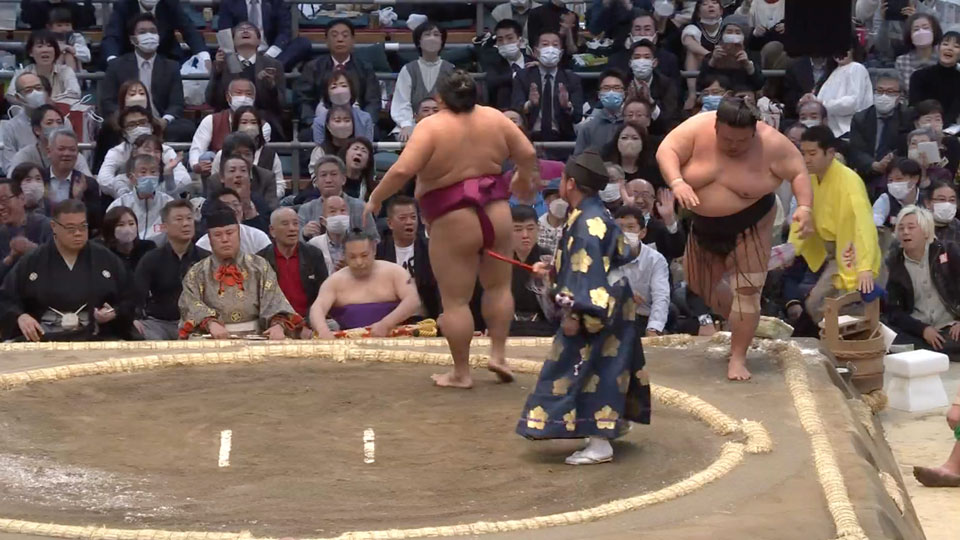
Scintillating Maegashira
So, even before the halfway point, the Osaka contest was left with no Yokozuna or Ozeki. It's the first time that's happened since the start of the Showa era in 1926.
Although the absence of the top two combatants was a huge disappointment, it cleared the way for the rest of the wrestlers to spend time in the spotlight. Maegashira rank-and-filer Midorifuji was ready to shine. At just 117 kilograms, the lightest rikishi went undefeated for 10 straight days. Thus, he found himself at the top of the standings with a comfortable two-win lead. People started to think he might just go all the way.
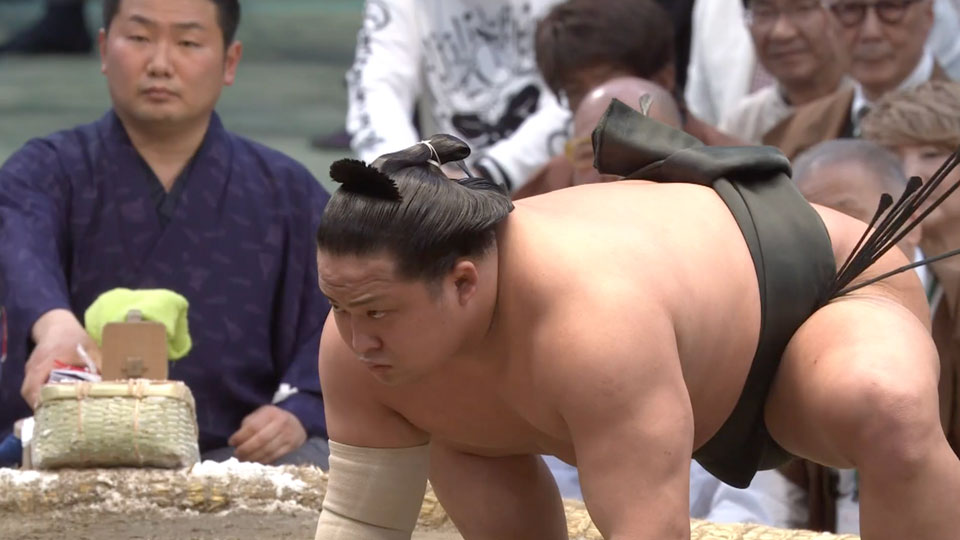
The Cinderella story had run its course, though. Midorifuji never won again for the rest of the tournament, finishing with 10 wins and 5 losses. He's probably down on himself, but I think that 10-bout streak should give him confidence going forward. Kudos to Midorifuji for making things so exciting, especially in the early part of the tournament when Takakeisho faltered.
Stepping up
So, who stepped up to lead the title race? Heading into the final day, it was Komusubi Daieisho in first place with 12 wins and 2 losses. Breathing down his neck was Sekiwake Kiribayama at 11 and 3. The battle for the Emperor's Cup couldn't have been scripted any better as the two contenders were to go head-to-head in the winner-take-all showdown on Day 15. If Daieisho defeated Kiribayama, he'd become the Spring tourney champion. But if Kiribayama beat Daieisho, the championship would be decided in a playoff between them.
Daieisho came out full steam ahead with his signature thrusting attack, quickly knocking Kiribayama back to the edge. But Kiribayama had an answer. He delivered a last-minute thrust down to win the match. So, they were tied at 12 wins and 3 losses after 15 bouts. Playoff time.
Just as in the first match, Daieisho pummeled Kiribayama hard with his thrusts and marched ahead. However, Kiribayama used his lateral mobility to shift away at the edge and sent Daieisho to the deck by thrusting him down. The gyoji referee gave the match to Kiribayama, but the five judges requested a conference to make sure the verdict was correct. After a thorough discussion and review, the call was upheld. Match to Kiribayama and his first top division championship.
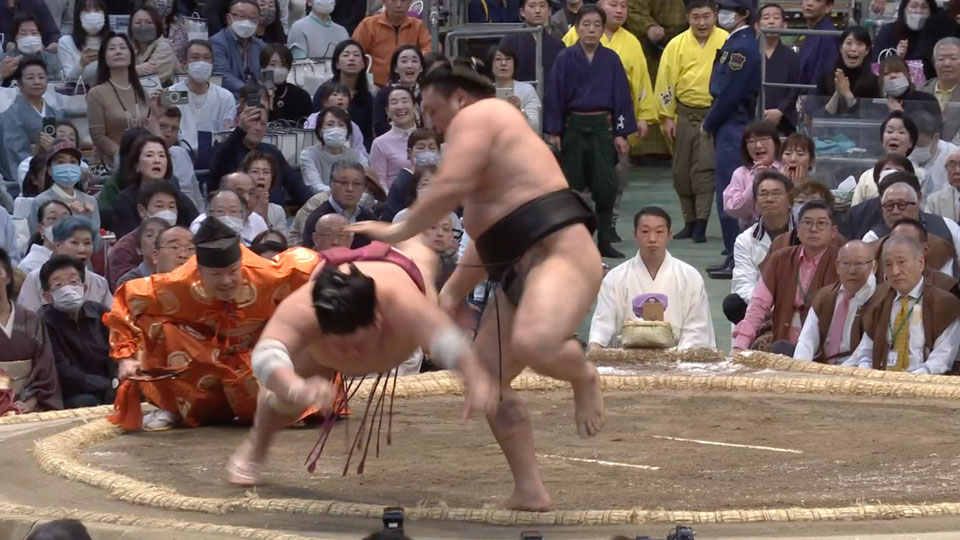
In the victory ceremony, Kiribayama said he was nervous but happy to have become a top division champion. He admitted to not knowing much about sumo eight years ago, when he came to Japan from Mongolia to turn pro. The 26-year-old said he'll do his best in the May tournament to earn promotion to Ozeki.
So, congratulations to Kiribayama. I've spoken to him a number of times. He's an amicable and humble man who's always working hard to improve. He's under the direction of former Ozeki Kirishima and former Yokozuna Kakuryu, so it's no wonder he's showing steady growth. Kiribayama told me before the tournament that he's feeling confident. He's getting bigger and stronger through tough training and a nutritious diet. Many wrestlers are on the list for possible elevation to Ozeki, but I'd say Kiribayama has made himself the top candidate for promotion.
Special prize recipients
Every top division rikishi covets the Emperor's Cup, but only one can walk away with it. Therefore, the sumo elders recognize those who made great contributions to a tournament's success.
This time, the Fighting Spirit Prize went to Kinbozan from Kazakhstan. The 25-year-old top division rookie scored 11 victories by thrashing his foes with a high-octane offense of strong pushing and thrusting. Many people see him as the next big thing. There's no doubt in my mind he'll keep getting better and stronger and will soon become a real threat to the upper echelons.
Daieisho, who finished at runner-up after losing to Kiribayama twice on the final day, picked up the Technique Prize. The 29-year-old came up just short, but he displayed great pushing and thrusting skills the entire tournament to rack up 12 victories.
The winner of the Emperor's Cup, Kiribayama, also claimed the Technique Prize. He showed his versatility by defeating opponents in various styles. His fundamentally sound sumo really impressed the sport's elders.
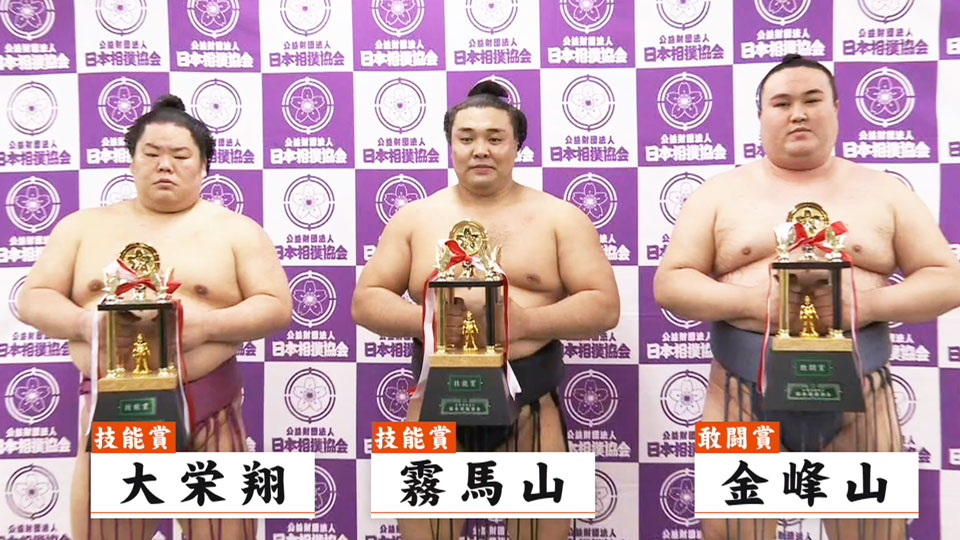
May tournament outlook
Now that the Spring tournament is in the books, let's shift our focus to the next competition, which will take place in Tokyo in May. It's never too early to look ahead.
First and foremost, will Yokozuna Terunofuji return to the ring? As I mentioned, he's kept himself on the sidelines for four consecutive tournaments, and the unease is growing. Terunofuji waited until almost the last moment to make up his mind about sitting out the March contest. Because of that, I expect him to return to action in May. If he doesn't, his future will be in doubt. It's time for the 31-year-old Yokozuna to shape up or ship out. He's run out of excuses, and I think he'll be back.
Ozeki Takakeisho failed to show himself as Yokozuna material this time. We're not sure how bad his knee injury is, but I believe he made a wise decision to pull himself out early. Otherwise, he might have aggravated the injury to the point where it would need a long time for a full recovery. I expect him to compete in May. He'll have to begin the long march toward Yokozuna status again. In fact, he'll need to score a majority of wins just to retain his ozeki status. Takakeisho is backed in a corner, but he's been there before and come out fighting. I hope he's able to do it again.
Building on his championship, Kiribayama will be looking to make his case for promotion to Ozeki. From what we've seen in the past, a wrestler usually needs 33 victories over three successive tournaments to make the leap. Kiribayama scored 11 wins in January and 12 this time. So, he needs 10 more in May to match the benchmark. You know that number will be on his mind.
A couple of combatants to keep your eye on are Ichinojo and Asanoyama. Both were relegated from the top division to the lower division due to suspensions. However, they manhandled their foes in Osaka to prove they belong in the big leagues. Ichinojo won the Juryo championship with 14 wins and 1 loss, while Asanoyama settled for second place at 13 and 2. Both have hoisted the Emperor's Cup in the past, and we know they're too good to remain outside the Makuuchi division. When they return in May, I have no doubt they'll make their presence felt immediately.
I recently spoke to Asanoyama, and he told me he's grateful just to be able to compete again and itching to be back in the top division. The former Ozeki is rededicating himself to being the best rikishi he can be. After chatting with him, I got the feeling that he's not only thinking about regaining his Ozeki glory but also determined to make a run for Yokozuna. So, look out!
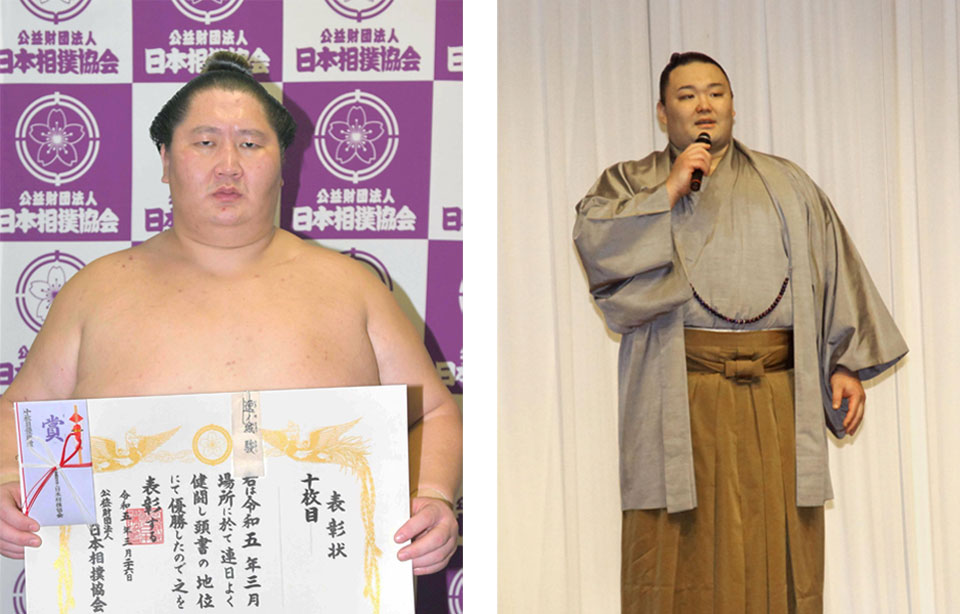
The May tournament, often called the summer tournament, will get underway on May 14th and last until May 28th. It'll take place at the home of sumo, Kokugikan, in Tokyo.
